-
 Bitcoin
Bitcoin $108,489.6704
1.13% -
 Ethereum
Ethereum $2,502.0528
2.92% -
 Tether USDt
Tether USDt $1.0002
0.00% -
 XRP
XRP $2.1941
0.51% -
 BNB
BNB $655.3375
1.00% -
 Solana
Solana $151.5977
1.27% -
 USDC
USDC $0.9999
0.00% -
 TRON
TRON $0.2768
0.32% -
 Dogecoin
Dogecoin $0.1676
2.86% -
 Cardano
Cardano $0.5675
0.98% -
 Hyperliquid
Hyperliquid $40.6109
7.48% -
 Bitcoin Cash
Bitcoin Cash $500.7746
2.09% -
 Sui
Sui $2.8328
2.03% -
 Chainlink
Chainlink $13.4452
1.26% -
 UNUS SED LEO
UNUS SED LEO $9.1623
0.39% -
 Avalanche
Avalanche $18.2267
2.24% -
 Stellar
Stellar $0.2382
0.00% -
 Toncoin
Toncoin $2.8885
1.68% -
 Shiba Inu
Shiba Inu $0.0...01159
0.91% -
 Litecoin
Litecoin $87.1827
0.88% -
 Hedera
Hedera $0.1511
2.90% -
 Monero
Monero $315.4992
-0.59% -
 Polkadot
Polkadot $3.4663
2.34% -
 Bitget Token
Bitget Token $4.6118
-0.65% -
 Dai
Dai $1.0000
-0.01% -
 Ethena USDe
Ethena USDe $1.0003
0.02% -
 Uniswap
Uniswap $7.2989
4.69% -
 Pepe
Pepe $0.0...01003
5.73% -
 Aave
Aave $275.5616
7.15% -
 Pi
Pi $0.5181
-2.49%
Is it a sign of accumulation if the volume in the bottom area continues to increase moderately?
Rising volume in a cryptocurrency's bottom area may signal accumulation, indicating growing buyer interest and potential institutional involvement.
Jun 30, 2025 at 11:14 am
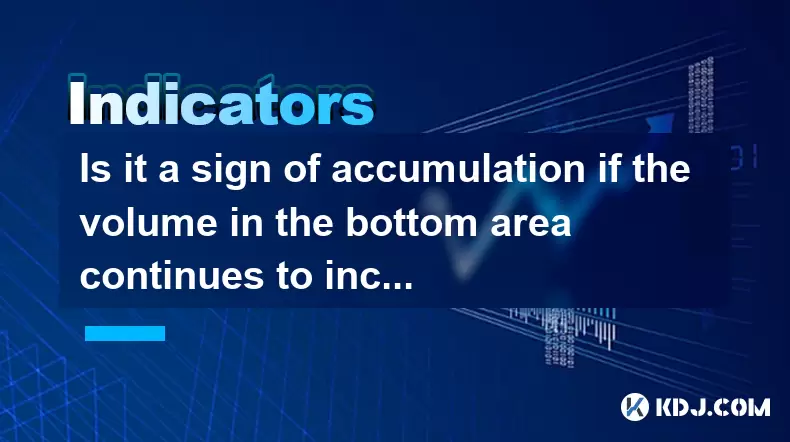
Understanding Volume in Cryptocurrency Trading
In the world of cryptocurrency trading, volume plays a crucial role in understanding market behavior. It refers to the total number of assets traded within a specific time frame. When analyzing candlestick charts, volume is often displayed at the bottom as a bar chart. A rising volume generally indicates increasing interest in a particular cryptocurrency, especially when it coincides with price movements. However, interpreting what that volume means requires deeper analysis, particularly when the asset is trading near its support or "bottom" level.
What Is Meant by the Bottom Area?
The bottom area in technical analysis typically refers to a price zone where an asset has previously found strong support. This area may be identified through historical price action, such as prior swing lows or significant consolidation zones. When price approaches this region and begins to stabilize or show signs of reversal, traders look for additional signals to confirm whether a potential accumulation phase is underway. Accumulation implies that institutional or large players are quietly buying while retail traders might still be selling out of fear or lack of conviction.
Significance of Increasing Volume in the Bottom Zone
If volume starts to rise moderately while the price remains in the bottom area, this could signal accumulation. Here’s why:
- Increased Buying Pressure: A gradual increase in volume suggests more buyers are entering the market, absorbing the selling pressure.
- Stabilization Signal: As sellers exhaust their positions, the price stops dropping despite continued selling, indicating demand is matching or exceeding supply.
- Quiet Institutional Involvement: Often, accumulation phases are marked by steady, moderate increases in volume rather than explosive spikes. This hints at smart money entering without triggering a massive price surge.
However, not every volume increase in the bottom area equates to accumulation. It's essential to cross-check with other indicators and price action cues.
How to Confirm Accumulation Through Volume Patterns
To determine if the increased volume in the bottom area truly reflects accumulation, consider these steps:
- Look for Higher Lows in Volume Bars: If each successive volume bar during the bottoming phase is higher than the previous one, it suggests growing interest.
- Watch for Bullish Candlestick Formations: Patterns like hammer candles, engulfing patterns, or morning stars forming near key support levels can reinforce the idea of accumulation.
- Use On-Balance Volume (OBV): OBV adds volume on up days and subtracts it on down days. A rising OBV line during sideways or slightly declining price action is a classic sign of accumulation.
- Check for Divergence with Momentum Indicators: If RSI or MACD shows divergence—price making lower lows but momentum making higher lows—it supports the notion that buyers are stepping in.
These tools help filter out false signals and provide a clearer picture of whether the volume is indeed part of an accumulation phase.
Differentiating Between Accumulation and Distribution Volume
It's important to distinguish between accumulation and distribution based on volume characteristics:
Accumulation Volume Traits:
- Gradual increase in volume over multiple sessions
- Price consolidates or forms higher lows
- Volume surges on bullish candles but not necessarily on bearish ones
Distribution Volume Traits:
- Sudden spikes in volume followed by sharp declines
- Price rises on high volume but fails to hold gains
- Bearish candlesticks appear after volume peaks
A moderate and sustained rise in volume during a bottoming process leans more toward accumulation, especially when accompanied by constructive price patterns.
Practical Example: Analyzing Bitcoin's Volume During a Downtrend
Take, for instance, a scenario where Bitcoin drops from $30,000 to $26,000 over several weeks. During this decline, volume fluctuates but doesn't consistently spike. Then, as Bitcoin reaches $26,000, the following occurs:
- Daily volume begins to rise gradually
- Several green candles appear with noticeable volume
- The OBV line starts trending upward despite choppy price movement
- Support tests become shallower and less aggressive
This pattern would suggest that large buyers are accumulating BTC at the $26,000 psychological level, preparing for a potential rally once selling pressure subsides.
Frequently Asked Questions
Q: Can volume alone confirm accumulation?
No, volume should always be used in conjunction with price action and possibly volume-based indicators like OBV. Relying solely on volume can lead to misinterpretation, especially in volatile crypto markets.
Q: What is considered a "moderate" increase in volume?
There's no universal definition, but a moderate increase typically refers to a gradual uptick across several periods, rather than a sudden spike. For example, seeing volume rise by 10–20% daily over five trading sessions instead of doubling overnight.
Q: How long should the volume stay elevated to indicate accumulation?
There’s no fixed duration, but sustained volume over multiple days or weeks is more meaningful than a one-day surge. Accumulation is usually a slow process, especially in markets like crypto where volatility can distort short-term readings.
Q: Does accumulation guarantee a price rebound?
Not necessarily. While accumulation increases the probability of a reversal, market sentiment, macro conditions, and news events can override technical signals. Always manage risk accordingly.
Disclaimer:info@kdj.com
The information provided is not trading advice. kdj.com does not assume any responsibility for any investments made based on the information provided in this article. Cryptocurrencies are highly volatile and it is highly recommended that you invest with caution after thorough research!
If you believe that the content used on this website infringes your copyright, please contact us immediately (info@kdj.com) and we will delete it promptly.
- Ripple, Stablecoin, Adoption: RLUSD Leading the Charge
- 2025-06-30 14:30:12
- Bitcoin ETF, IBIT, and the Bull Flag: Is $144,000 on the Horizon?
- 2025-06-30 14:50:12
- Bitcoin, Passive Income, and a Bull Raise: Riding the Crypto Wave
- 2025-06-30 14:30:12
- Bitcoin, Personal Loans, and Omega 88: A New Era in Lending?
- 2025-06-30 15:09:14
- Saylor's Strategy: How MicroStrategy's Bitcoin Bet is Reshaping Finance
- 2025-06-30 14:52:14
- Metaplanet's Bitcoin Blitz: From Zero to Hero in the Corporate Treasury Race
- 2025-06-30 15:10:54
Related knowledge
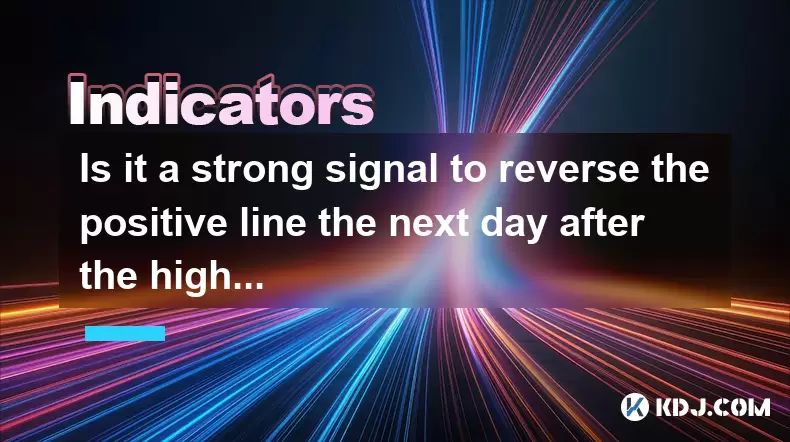
Is it a strong signal to reverse the positive line the next day after the high-level long upper shadow line?
Jun 30,2025 at 03:56pm
Understanding the High-Level Long Upper Shadow LineIn technical analysis, a high-level long upper shadow line refers to a candlestick pattern where the price opens at a certain level, rises significantly during the session, but then closes much lower than its high point. This results in a candle with a long upper wick or shadow, indicating that buyers p...
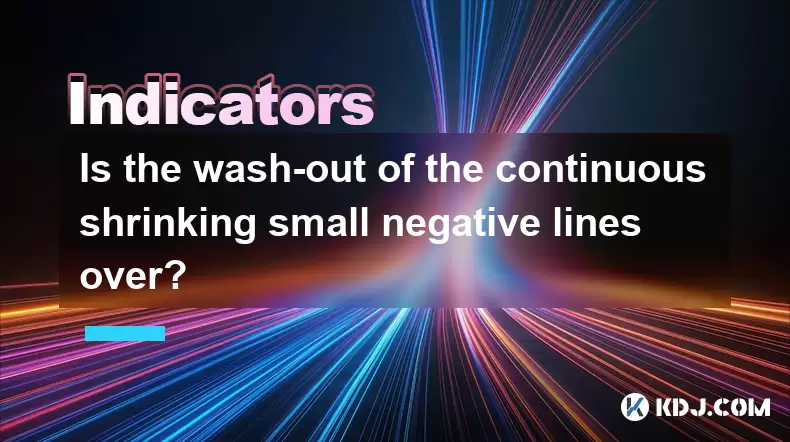
Is the wash-out of the continuous shrinking small negative lines over?
Jun 30,2025 at 12:21pm
Understanding the Concept of Wash-Out in Cryptocurrency MarketsIn cryptocurrency trading, a wash-out refers to a sharp price decline that forces weak-handed traders and investors to liquidate their positions. This often happens when a series of small negative candlesticks appear on the chart, indicating bearish sentiment without a significant breakout. ...
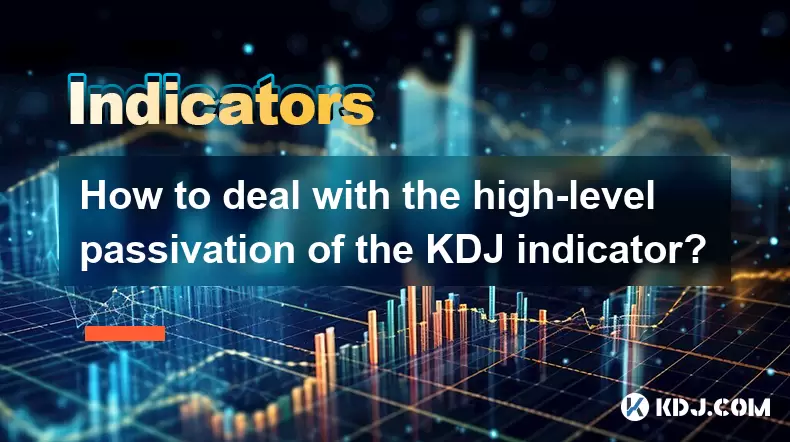
How to deal with the high-level passivation of the KDJ indicator?
Jun 30,2025 at 02:14pm
Understanding the KDJ Indicator and Its Role in Cryptocurrency TradingThe KDJ indicator, also known as the stochastic oscillator with J line modification, is a momentum-based technical analysis tool widely used in cryptocurrency trading. It consists of three lines: K, D, and J, which reflect overbought and oversold conditions. Traders often rely on it t...
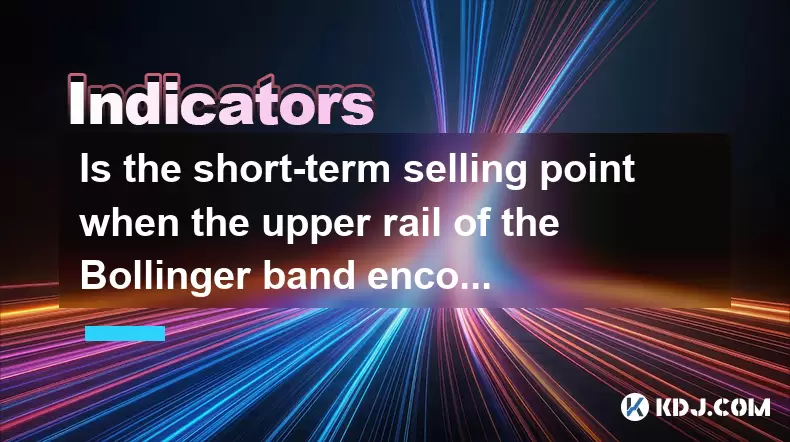
Is the short-term selling point when the upper rail of the Bollinger band encounters resistance and falls back?
Jun 30,2025 at 03:29pm
Understanding Bollinger Bands and Their Role in TradingBollinger Bands are one of the most widely used technical indicators in cryptocurrency trading. They consist of three lines: a simple moving average (SMA) in the middle, typically set to 20 periods, and two outer bands that are standard deviations away from the SMA—usually set at 2 standard deviatio...
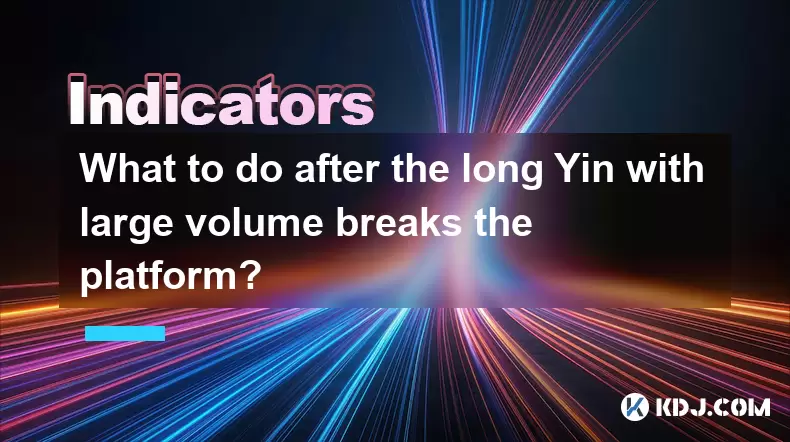
What to do after the long Yin with large volume breaks the platform?
Jun 30,2025 at 03:07pm
Understanding the Long Yin with Large Volume PatternA long Yin refers to a candlestick pattern where the price opens higher but closes significantly lower, forming a long red (or bearish) candle. When this occurs alongside large trading volume, it signals strong selling pressure and a potential shift in market sentiment. If this pattern breaks a previou...
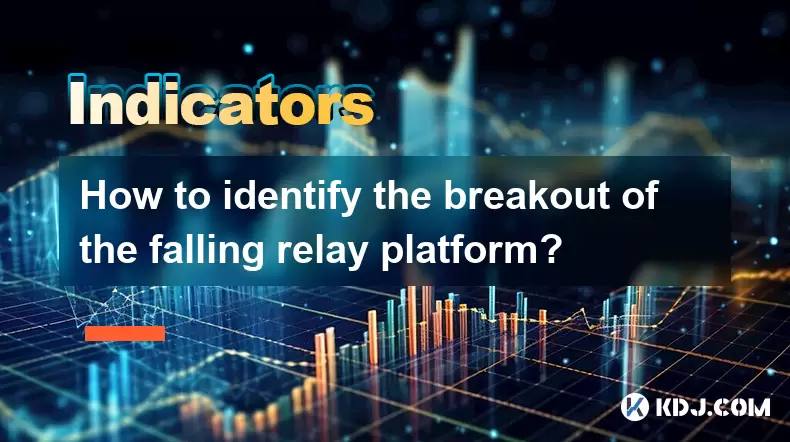
How to identify the breakout of the falling relay platform?
Jun 30,2025 at 03:35pm
What is a Falling Relay Platform in Cryptocurrency Trading?In cryptocurrency trading, a falling relay platform refers to a specific price pattern observed on candlestick charts. It typically manifests as a series of consolidation zones during a downtrend, where the price temporarily stabilizes before continuing its downward movement. These platforms are...

Is it a strong signal to reverse the positive line the next day after the high-level long upper shadow line?
Jun 30,2025 at 03:56pm
Understanding the High-Level Long Upper Shadow LineIn technical analysis, a high-level long upper shadow line refers to a candlestick pattern where the price opens at a certain level, rises significantly during the session, but then closes much lower than its high point. This results in a candle with a long upper wick or shadow, indicating that buyers p...

Is the wash-out of the continuous shrinking small negative lines over?
Jun 30,2025 at 12:21pm
Understanding the Concept of Wash-Out in Cryptocurrency MarketsIn cryptocurrency trading, a wash-out refers to a sharp price decline that forces weak-handed traders and investors to liquidate their positions. This often happens when a series of small negative candlesticks appear on the chart, indicating bearish sentiment without a significant breakout. ...

How to deal with the high-level passivation of the KDJ indicator?
Jun 30,2025 at 02:14pm
Understanding the KDJ Indicator and Its Role in Cryptocurrency TradingThe KDJ indicator, also known as the stochastic oscillator with J line modification, is a momentum-based technical analysis tool widely used in cryptocurrency trading. It consists of three lines: K, D, and J, which reflect overbought and oversold conditions. Traders often rely on it t...

Is the short-term selling point when the upper rail of the Bollinger band encounters resistance and falls back?
Jun 30,2025 at 03:29pm
Understanding Bollinger Bands and Their Role in TradingBollinger Bands are one of the most widely used technical indicators in cryptocurrency trading. They consist of three lines: a simple moving average (SMA) in the middle, typically set to 20 periods, and two outer bands that are standard deviations away from the SMA—usually set at 2 standard deviatio...

What to do after the long Yin with large volume breaks the platform?
Jun 30,2025 at 03:07pm
Understanding the Long Yin with Large Volume PatternA long Yin refers to a candlestick pattern where the price opens higher but closes significantly lower, forming a long red (or bearish) candle. When this occurs alongside large trading volume, it signals strong selling pressure and a potential shift in market sentiment. If this pattern breaks a previou...

How to identify the breakout of the falling relay platform?
Jun 30,2025 at 03:35pm
What is a Falling Relay Platform in Cryptocurrency Trading?In cryptocurrency trading, a falling relay platform refers to a specific price pattern observed on candlestick charts. It typically manifests as a series of consolidation zones during a downtrend, where the price temporarily stabilizes before continuing its downward movement. These platforms are...
See all articles

























































































